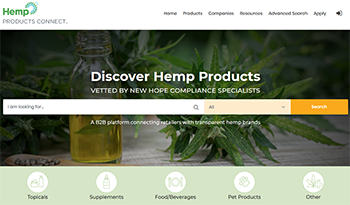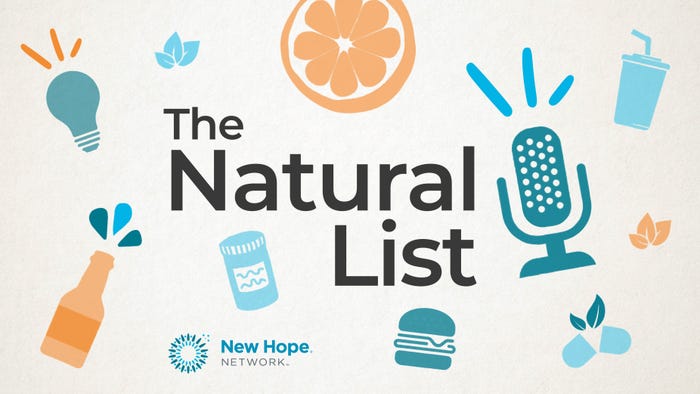How to label your CBD product correctly
Follow these do’s and don’ts to stay out of the federal regulator spotlight—and be considered for exhibiting at Natural Products Expo.

Editor's note: This article is current as of June 2019.
The new world of hemp CBD-containing products is presenting excitement—and much confusion. During this time of uncertainty, New Hope Network wants to see brands labeling their hemp products appropriately in order to strengthen the industry unity.
The following recommendations are what our standards department requires to exhibit these hemp CBD-containing products at Natural Products Expo West and East. We strive to get this burgeoning industry aligned with these standards to move forward with a cohesive approach.
Determine the correct label
To determine if your product needs a food or supplement label, you need to consider the directions for use as well as the intended use of the product. If your product is a capsule, soft gel or oral spray, it needs a supplement label. For oil drops, if the suggested serving size is a number of drops, the product is also a supplement.
Even some food and beverage formats should be labeled as supplements—especially those where the suggested serving size is below the FDA’s RACC (recommended amount customarily consumed). Bottom line: it’s all about the intended use, which can be established by container size, number of servings in the container, serving size, marketing claims made about the items and the dosage of specialty ingredients. In fact, more often than not, a hemp CBD product will need a supplement label.
When going the supplement label route, follow the FDA labeling regulations for dietary supplements.
Don’t mess up the front
The most important part of labeling—and the most often done incorrectly—is the front of the package. The display panel must include some vital pieces of information:
The net weight (volume of the container for liquids), or
The count (number of capsules or tablets contained in the bottle)
This requirement differs from products sold in marijuana dispensaries. Therefore, if you’re selling your product only in-state, it’s appropriate to go by that state’s labeling laws. Otherwise, you’ll need to follow the federal rules.
Another required piece of information that must appear on the front display panel of the label is the statement of identity. This could be “hemp extract supplement,” “herbal supplement,” “dietary supplement,” or something similar.
You may want to call out the amount of a nutrient, such as 15 mg CBD per serving, on the front of the package. This is allowed, but the amount must match the facts panel information on the back of the label.
Identify the parts
If you’ve identified dietary supplement on the front, the back of the package requires a Supplement Facts panel. For herbal products (not foods) you’ll need to identity the part(s) of the plant used—the parts of the hemp plant in this case. This should be indicated as the total amount of hemp extract or oil (in milligrams) per serving. Otherwise, the product will appear to be an isolate if you are only declaring the amount of CBD per serving in the facts panel. For clarity, you have the option here to separate out the cannabidiol (and/or other cannabinoids) and list the amount(s) per serving.
If your product is a food or beverage, you’ll need to use a Nutrition Facts panel on the back. These are slightly different from the Supplements Facts panel, so you should refer to the FDA Food Labeling Guide. The front of the package, however, has relatively the same requirements as a supplement.
Don’t spotlight the CBD
We know “CBD” is sexy, but we suggest you position your product as a hemp or full-spectrum cannabinoid product—not just a CBD product. If you are truly selling a wholistic, full-spectrum hemp plant product, why not call it that?
A more comprehensive focus on hemp and the entourage effect of a full spectrum of cannabinoids will clearly identify and distinguish CBD-containing products from isolated CBD drug products—and keeping health benefits claims to what is acceptable for foods and dietary supplements may reduce the risk of falling into FDA’s enforcing radar.
Furthermore, CBD isolate products (except for topicals) are prohibited at Natural Products Expo.
Follow instructions
If you want to label correctly, follow the FDA’s Labeling Guidance documents for Dietary Supplements and for Foods, when applicable. Refer to these resources for all the labeling requirements.
You may also refer to New Hope Network Standards for our policy on exhibiting and advertising hemp CBD-containing products. And remember, all the other marketing claims you make about your product must also comply with these standards.
 Hemp Products Connect directory: Explore and compare responsible hemp and CBD brands and products backed by New Hope Network Standards.
Hemp Products Connect directory: Explore and compare responsible hemp and CBD brands and products backed by New Hope Network Standards.
About the Author
You May Also Like




